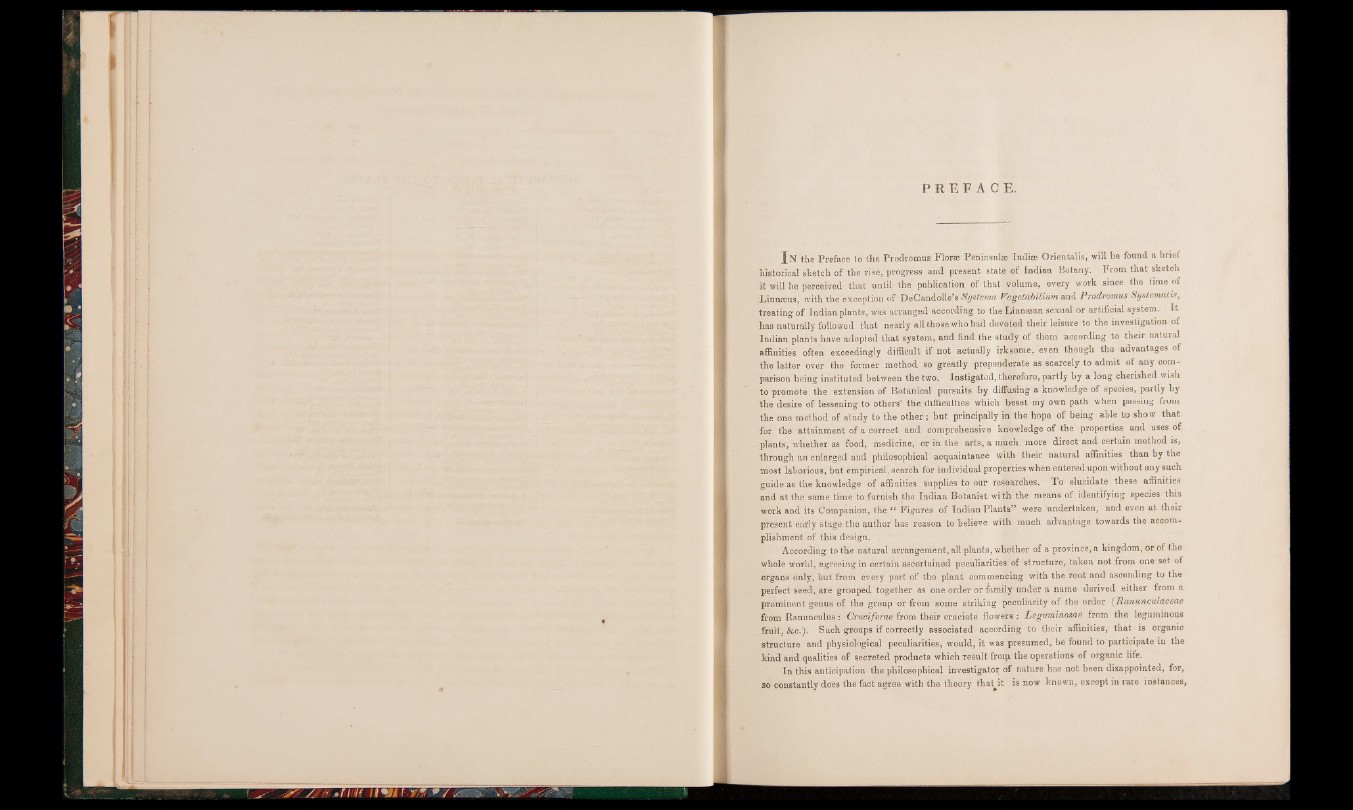
P R E F A C E .
I n the Preface to the Prodromus Florae Peninsulas Indiee Orientalis, will be found a brief
historical sketch of the rise, progress and present state of Indian Botany. From that sketch
it will be perceived that until the publication of that volume, every work since the time of
Linnaeus, with the exception of DeCandolle’s Sy sterna Fegetabilium and Prodromus Systematts,
treating of Indian plants, was arranged according to the Linnaean sexual or artificial system. It
has naturally followed that nearly all those who had devoted their leisure to the investigation of
Indian plants have adopted that system, and find the study of them according to their natural
affinities often exceedingly difficult if not actually irksome, even though the advantages of
the latter over the former method so greatly preponderate as scarcely to admit of any comparison
being instituted between the two. Instigated, therefore, partly by a long cherished wish
to promote the extension of Botanical pursuits by diffusing a knowledge of species, partly by
the desire of lessening to others* the. difficulties which beset my own path when passing from
the one method of study to the other; but principally in the hope of being able to show that
for the attainment of a correct and comprehensive knowledge of the properties and uses of
plants, whether as food, medicine, or in the arts, a much more direct and certain method is,
through an enlarged and philosophical acquaintance with their natural affinities than by the
most laborious, but empirical, search for individual properties when entered upon without any such
guide as the knowledge of affinities supplies to our researches. 1 o elucidate these affinities
and at the same time to furnish the Indian Botanist with the means of identifying species this
work and its Companion, the “ Figures of Indian Plants” were undertaken, and even at their
present early stage the author has reason to believe with much advantage towards the accomplishment
of this design. ,
According to the natural arrangement, all plants, whether of a province, a kingdom, or of the
whole world, agreeing in certain ascertained peculiarities of structure, taken not from one set of
organs only, but from every part of the plant commencing with the root and ascending to the
perfect seed, are grouped together as one order or family under a name derived either from a
prominent genus of the group or from some striking peculiarity of the order (Ranunculaceae
from Ranunculus: Cruciferae from their cruciate flowers : Leguminoscte from the leguminous
fruit, &c.). Such groups if correctly associated according to their affinities, that is organic
structure and physiological peculiarities, would, it was presumed, be found to participate in the
kind and qualities of secreted products which result froip the operations of organic life.
In this anticipation the philosophical investigator of nature has not been disappointed, for,
so constantly does the fact agree with the theory thaHt is now known, except in rare instances,